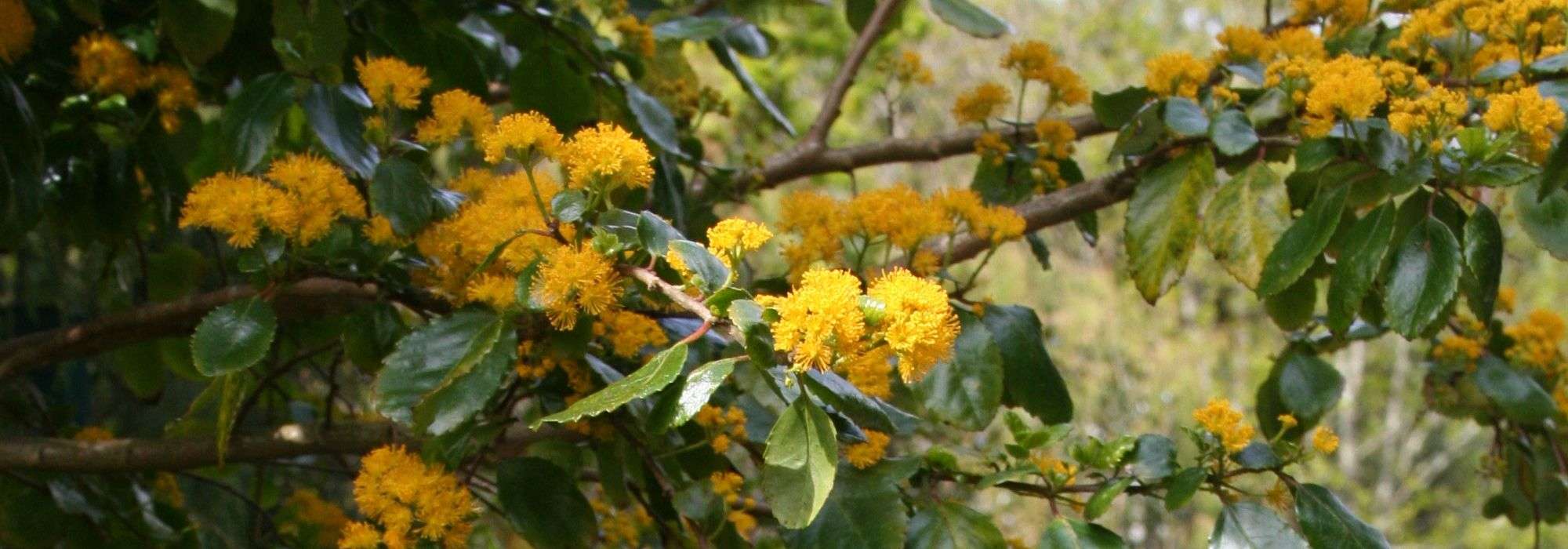
Azara: planting, pruning and care
Contents
Azara in a nutshell
- Azaras are evergreen bushes with glossy foliage
- Their yellow, scented spring flowering is reminiscent of mimosa
- Compact Azaras are perfectly at home in small gardens or in pots.
- They are also much appreciated by bees at flowering time
- These bushes thrive in mild climates in non-scorching sun in ordinary, free-draining soil.
A word from our expert
Imagine a kind of shrub with a trailing habit and small glossy evergreen leaves whose flowering could easily be mistaken for that of a mimosa. And yet, Azara has absolutely nothing to do with mimosas. In reality, they are botanically closer to willows and poplars… although they do not resemble them at all. And yes, botany is complicated!
Although very attractive year-round thanks to its evergreen or semi-evergreen foliage, Azara captures all attention from gardeners and visitors during its spring flowering of fragrant yellow pom-poms. Humans are not the only ones to adore these flowers; indeed, bush literally becomes covered in bees, the blooms being so melliferous.
Native to Chile and Argentina, Azaras are ultimately hardier than their natural range might suggest. They can easily be grown here in regions with mild winters such as southern France, the Atlantic coast and even in sheltered, wind-protected urban gardens. The key is to give it plenty of sun (not scorching) and soil that stays cool but is well drained.
Although an adult Azara can, slowly, reach up to five metres tall at maturity, this bush has every place in modest-sized gardens and can even be grown in a pot if you fancy it.
Description and botany
Botanical data
- Latin name Azara sp.
- Family Salicaceae
- Common name Azara, Chilean mimosa
- Flowering March-April
- Height 400 cm
- Exposure sun or partial shade
- Soil type well-drained, sandy or humus-bearing.
- Hardiness -10°C
Azaras belong to family Salicaceae (like willows and poplars) and are native to the rainforests of Argentina and Chile. About ten species occur in the genus; four main ones are: Azara dentata with small dentate leaves and flowering combining scents of vanilla, honey and linden, Azara lanceolata with lanceolate leaves, Azara microphylla, the hardiest of the genus, with very small ovate leaves and a powerful vanilla scent, and Azara serrata with dentate leaves.
These are small trees or large bushes with an upright, fountain-like habit, somewhat spreading, with flexible twigs that trail under the weight of the flowers. Bark is pale brown with even paler lenticels.
Foliage consists of alternate, single and petiolate leaves. Leaves are stipulate and have serrated to serrulate margins (slightly dentate). Foliage is evergreen or semi-evergreen depending on climate.
Flowers are yellow and hermaphrodite. Each has 4 to 5 villous tepals and a large number of yellow stamens. They are grouped in small mustard-yellow glomerules. These odd little yellow pom-poms are gathered in corymbs 3 to 4 cm in diameter, positioned in leaf axils.
Fruits are globose berries, often pink, containing numerous seeds 2 mm long.
Lifespan exceeds one hundred years and growth rate is rather slow.
Please note: Azaras formerly belonged to family Flacourtiaceae.
Our favourite varieties
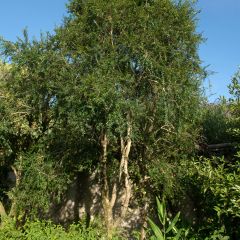
Azara microphylla
- Flowering time April, May
- Height at maturity 4 m
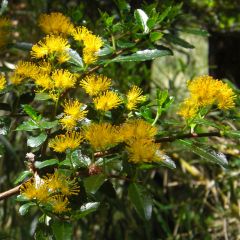
Azara serrata
- Flowering time July, August
- Height at maturity 5 m
Discover other Azara
View all →Available in 1 sizes
Available in 1 sizes
Planting Azara
Where to plant?
Plant Azara in full sun or, if necessary, in partial shade in a region where winter temperatures do not fall below -12°C: south, Atlantic coast, and also well-sheltered urban gardens protected from cold winds can readily accommodate Azaras.
Azaras require a fresh, rich, humus-bearing, non-calcareous and, above all, well-drained soil to prevent roots from freezing in winter.
When to plant?
Planting is done in autumn (November–December) in milder regions or in late spring once all risk of frost has passed.
How to plant?
- Re-wet the rootball by immersing the plant in water for a few minutes, then remove from its pot
- Dig a hole at least twice the volume of the rootball
- Keep the excavated soil and mix it with coarse sand, gravel or pumice to lighten it, especially if it is heavy
- Avoid placing a layer of gravel at the bottom of the hole to improve drainage as is sometimes recommended or read; on the contrary, this increases water stagnation around the roots. Instead, add a few handfuls of potting compost or well-rotted compost to the bottom of the hole
- Place the rootball in the hole and backfill with the excavated soil (mixed with the sand and gravel)
- Firm the soil gently around base of plant
- Give a good watering to reduce risk of creating “air pockets” between substrate and roots
- A mulch of leaves or BRF about 10 cm thick is recommended.
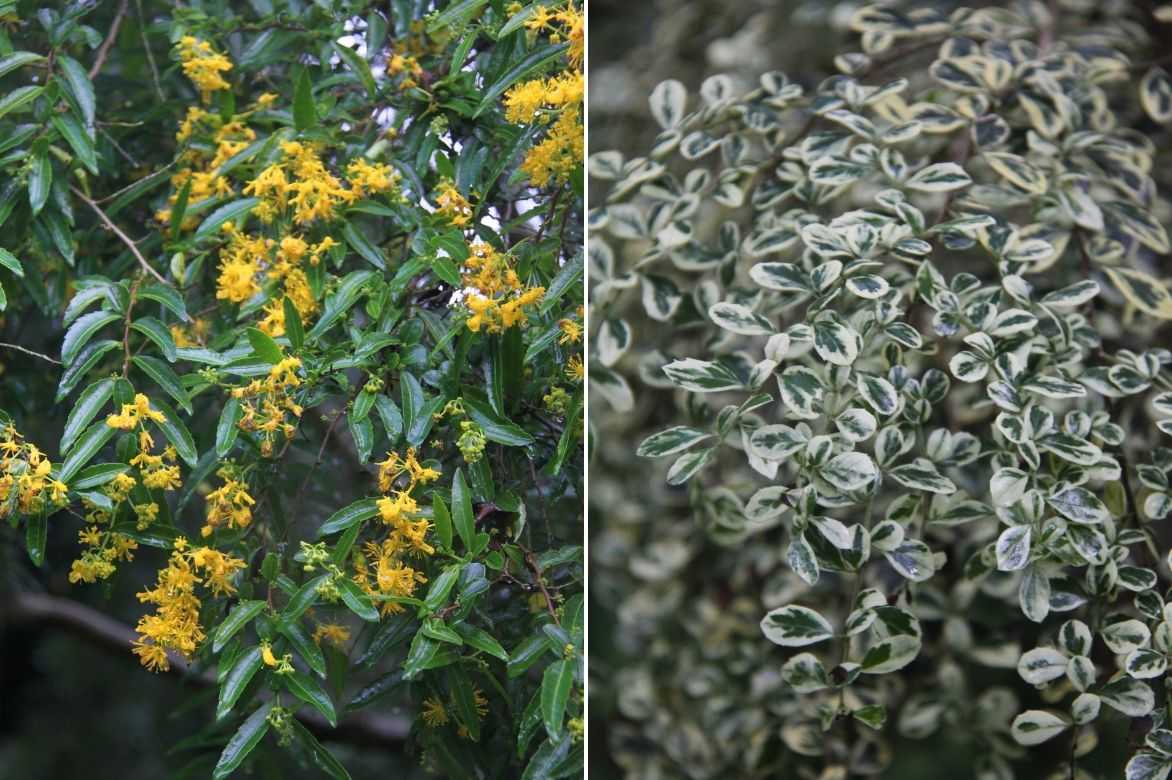
Other species and interesting varieties: Azara lanceolata and Azara microphylla ‘Variegata’
Care and maintenance
Care
Azara requires little care. Just remember to water during first months after planting and in periods of severe drought, especially first year.
Renew mulch every year.
Pruning
Azara does not require pruning, except for removal of dead wood or one or two branches that impair structure. Carry out this pruning, if needed, after flowering, therefore between May and July depending on species. Azara does not resprout from old wood, so avoid pruning old wood.
Possible diseases and pests
Azara is not affected by any diseases or pests.
In very cold winters, foliage, normally evergreen, may drop. But it reappears as soon as warmer weather returns.
Propagation: propagation by cuttings, layering
Propagation by cuttings in summer
- Cut a young shoot about ten centimetres long. It must have at least three nodes.
- Remove leaves from the future cutting, leaving only four at the top to avoid water loss by evapotranspiration.
- Bury your cuttings three-quarters deep in a free-draining substrate of half potting compost and half sand.
- Keep substrate moist but not waterlogged.
- Place cuttings in shade. Wait until following spring before planting bush in open ground.
Air layering in spring
- In April, choose a well lignified woody stem, and remove all leaves except the topmost. Carefully remove a strip of bark 1 or 2 cm long using a razor blade or a sharp knife sterilised with alcohol.
- Enclose that part of the branch with a plastic bag. Fill this “pocket” with sphagnum or other moss (bryophyte). Spray with water to thoroughly moisten it.
- Secure this “wrapping” at both ends with raffia or string.
- An air layer takes time: roots will only develop after several months, sometimes longer. When they have formed, cut the branch below the plastic wrapping.
- Unwrap everything and pot the young seedling in a free-draining substrate of half universal potting compost and half river sand.
- Wait another year before replanting the young bush in its final position.
Companion planting for Azara
Within a flowering hedge for mild climates or seaside
Azara serrata form sumptuous, colourful hedges and, above all, very lively ones as they attract many insects. Ideally mix them with other flowering bushes. For example, a fine Ceanothus arboreus ‘Trewithen Blue’ whose blue flowers will soften Azara’s yellow flowers. Choisya ternata will add a touch of fruity fragrance, while Abelia grandiflora will flower throughout summer and into early autumn. To have a second bush with evergreen leaf, opt for a very pretty Pittosporum tenuifolium ‘Elizabeth’ with leaf delicately variegated with cream that will flower in spring with a lovely honey scent.
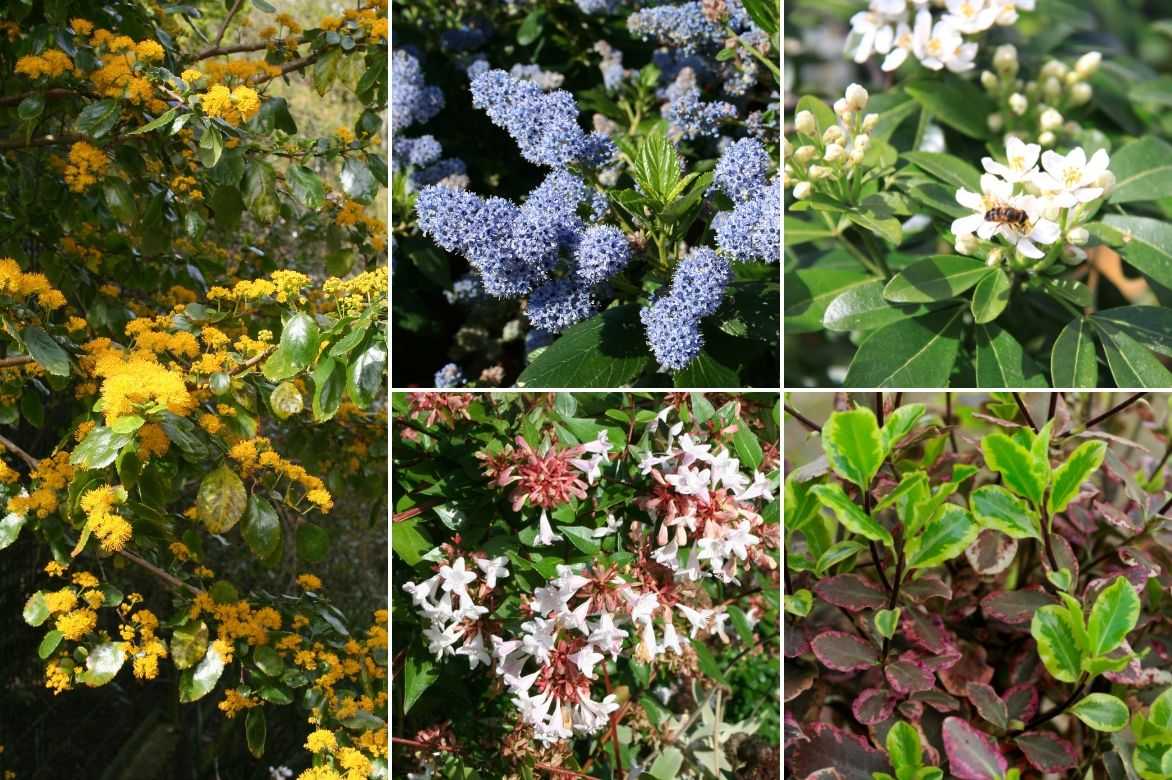
An example of a planting combination: Azara serrata, Ceanothus arboreus ‘Trewitthen Blue’, Choisya ternata, Abelia grandiflora and Pittosporum tenuifolium ‘Elizabeth’
Alone near a south-facing wall
Azara microphylla can easily brighten a south-facing wall in colder regions or a slightly less bright, warm exposure in milder climates. It is often tricky to plant more than one bush close to a wall. The simplest solution is to brighten its base with container plantings. Choose blue tones that will perfectly complement Azara’s glossy green leaf and yellow flowering. A handsome young plant of Sedum cauticola ‘Lidakense’ with glaucous leaf and pink autumn flowering will be a perfect, very hardy companion for your bush. A pot of Euphorbia myrsinites whose leaf is slightly bluish too, but whose yellowish flowering will sit perfectly alongside Azara’s. As for bushes, try a small, charming Juniperus squamata ‘Blue Star’ with bluish evergreen leaf. In mild climates, add a Leonitis leonurus, a Lamiaceae with spectacular orange flowering that will closely follow Azara’s.
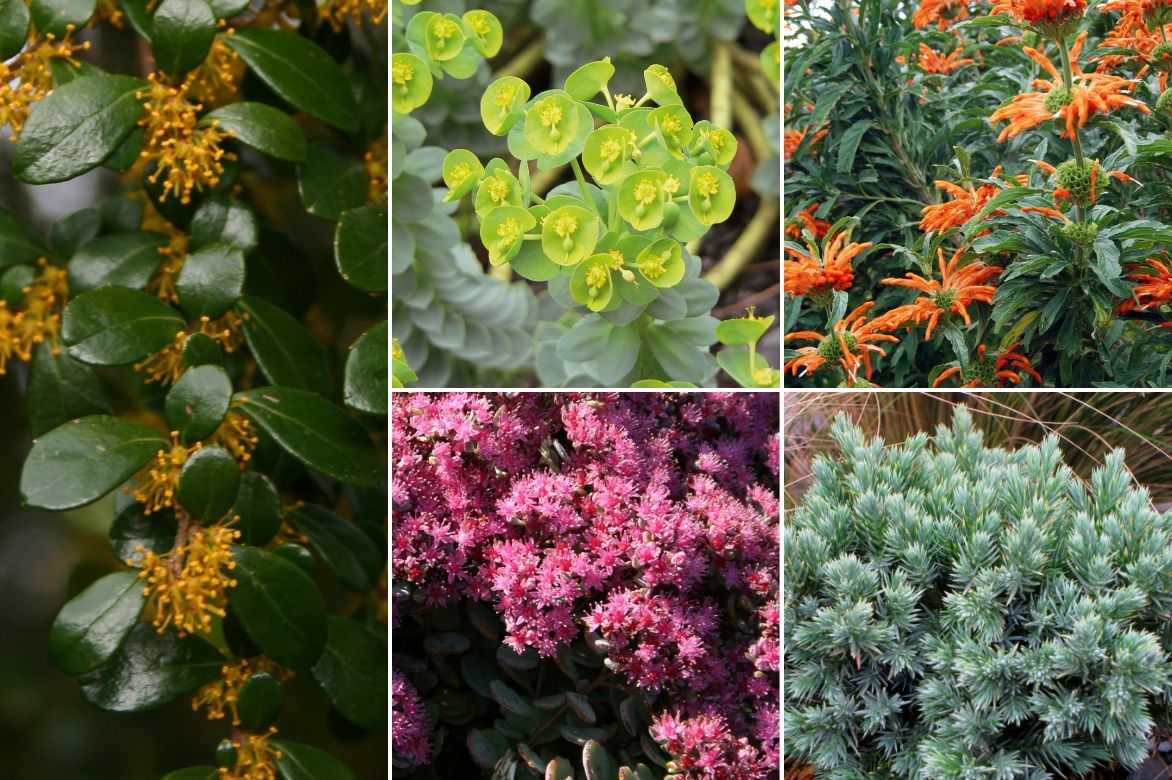
Another example of a planting combination: Azara microphylla, Euphorbia myrsinites, Leonitis leonurus, Sedum cauticola ‘Lidakense’ and Juniperus squamata ‘Blue Star’
Note: Azara can itself be grown in a pot in well-draining soil.
Did you know?
- Genus Azara is named after Spaniard Féliz Manuel de Azara, a soldier and engineer but above all a brilliant self-taught naturalist who spent twenty years in South America at the end of the 18th century exploring, defining Spain’s new frontiers and studying the local fauna and flora.
- The first Azara was not introduced to Europe until 1861.
- Flowering branches can be used for bouquets or placed in a vase.
- Azara serrata received the Royal Horticultural Society’s Award of Garden Merit in 2013.
Useful resources
- Find our finest Azara varieties in our online nursery: our best varieties of Azara.
- Discover our tips to grow Azara in a pot: cultiver l’Azara en pot.
- But where do plants for southern gardens come from? We explain everything in this lovely article “Mediterranean plants: where do they really come from?“
- Looking for ideas to design your garden? Read “10 iconic plants to landscape a Mediterranean garden“
- Subscribe!
- Contents
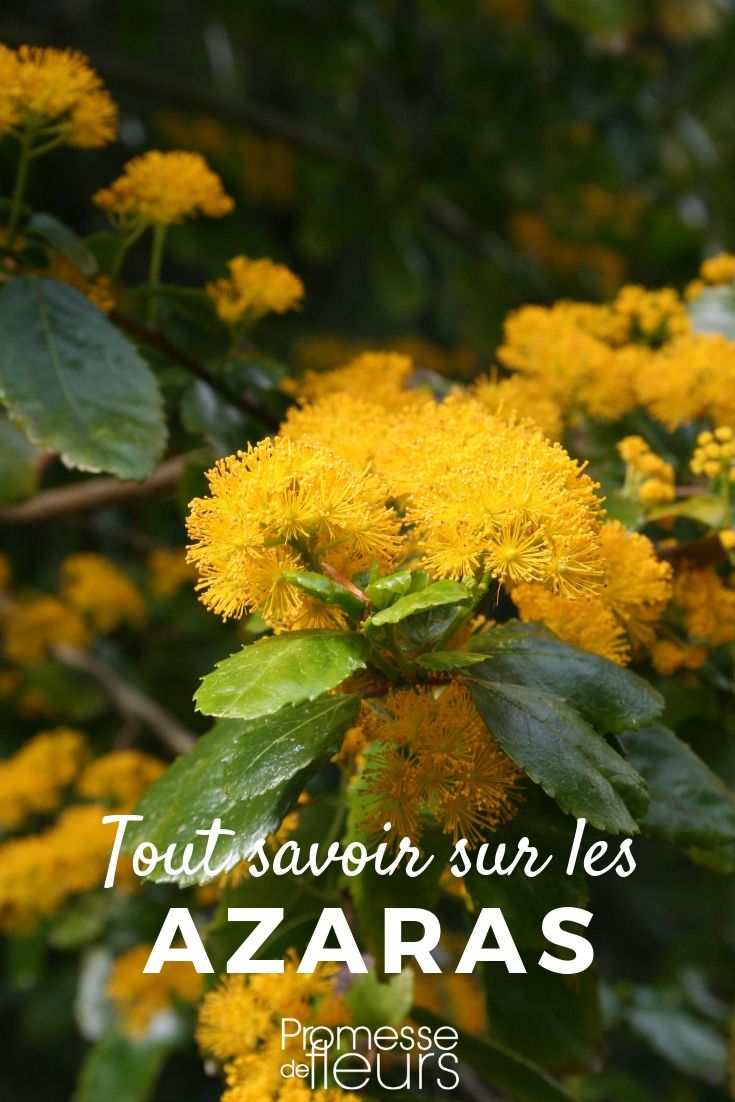































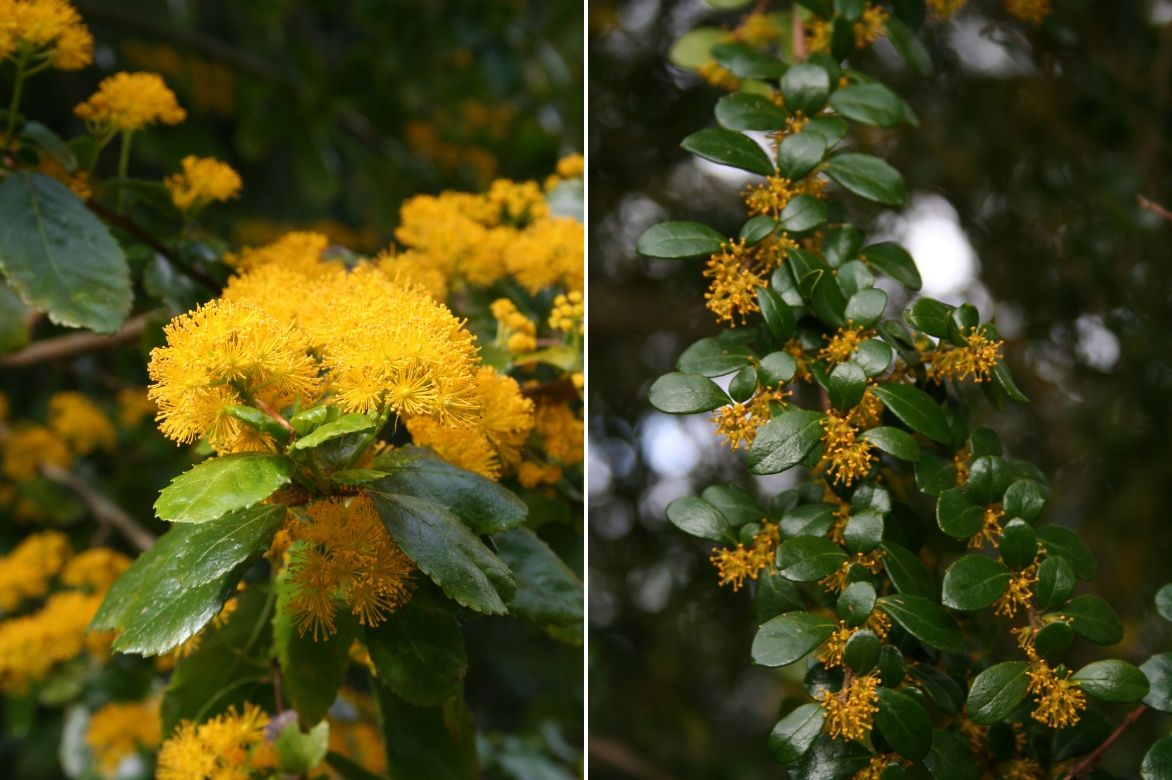


Comments